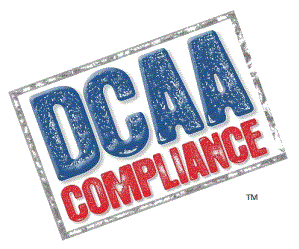Here are some of the issues confronting a DCAA auditor when they are assigned your incurred cost proposal:
- They are working in an envrioment that is demonstrably less productive then years past. Most of us believe this is not the auditor’s fault. We hear stories about them sitting for hours waiting for a decision from above on how to move forward. This resulted in a backlog that Congress itself made two separate attempts to address.
- In response to this, DCAA management creates justification for not working by signing off on incurred cost proposals in mass. DCAA management justifies this by making false comparisons between DCAA not auditing and the IRS not auditing. In addition to my previous arguments, I might point out the agencies respective titles say it all. The Internal Revenue Service is focused on revenue. The Defense Contract Audit Agency is tasked with audit.
- The odds are that your DCAA auditor is not an idiot. They know that these actions are putting hundreds of millions of taxpayer dollars at risk. The good ones feel a little guilt and responsibility about blindly signing off on an incurred cost proposal without any audit activity. Even the bad ones worry about the action later blowing up in their face.
What is the auditor to do? What most of them are doing are:
- Asking you some questions in order to feel better about their work and more comfortable with your submission.
- Bending your incurred cost submission into some kind of document not found in regulation and for possible subsequent use for further actions. Part of this arises from the aforementioned FACT that the model DCAA ICE exceeds its regulatory authority. Part of this arises from the lack of training and comprehensive knowledge of their own model found among many auditors (examples include: Why the T&M on the Schedule I did not match the Schedule H?, Why the Fringe Benefit Schedule does not tie to the Fringe Benefits on the Schedule H?, Why the vacation expense on the Schedule L does not tie to the vacation expense on the Fringe Schedule?, and my favorite – Why does the costs on the left side of the schedule I not match the billing and when is the contractor sending the difference back?). Finally, part of this arises from the auditors understanding (conscious or not) that they need more information before they let this go.
The problem with this is simple – None of this is subject to standardization expressed in either regulation or even guidance. These good intentions or desire to CYA, are implemented differently by each DCAA office, each DCAA auditor.
The contractor has no idea what to expect when they turn in a proposal. It certainly will not be what the regulation requires. It will be what ever makes the auditor, their supervisor, their branch manager, or all three happier.
The contractor is dragged into the swamp with the auditor. With my clients I walk a fine line between giving into the auditor’s desires and reminding them that they have exceeded their authority. I try and do this gently by noting that the information they want is a subject for audit, not adequacy.
Of course, the way out of the swamp is leadership by DCAA, something that many people have questioned over the last decade. Until then, we are forced to navigate through the swamp with the knowledge that every time we are dragged into it, the way out will be unique.

1 thought on “Confusing Adequacy and Audit – Incurred Cost Proposal Fiction and Reality Part Three – Adequacy or CYA?”
Comments are closed.